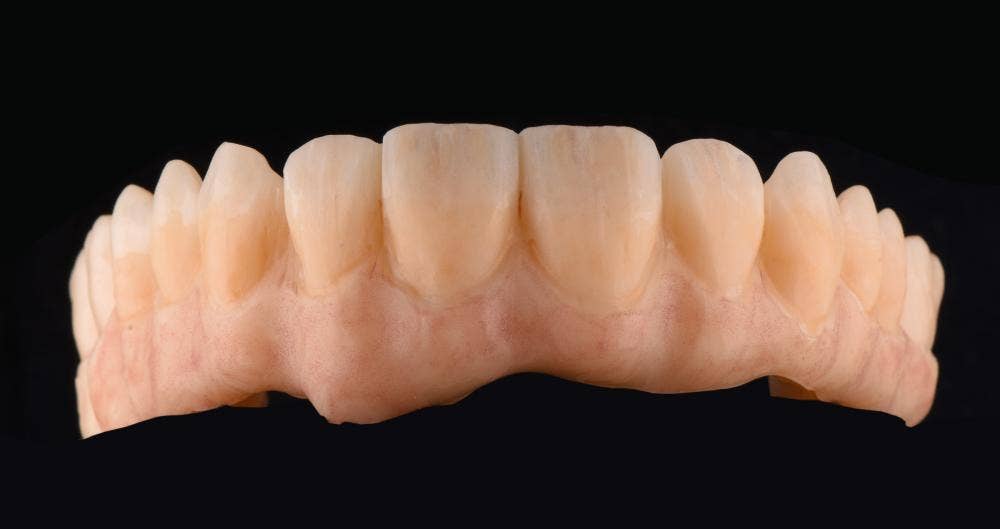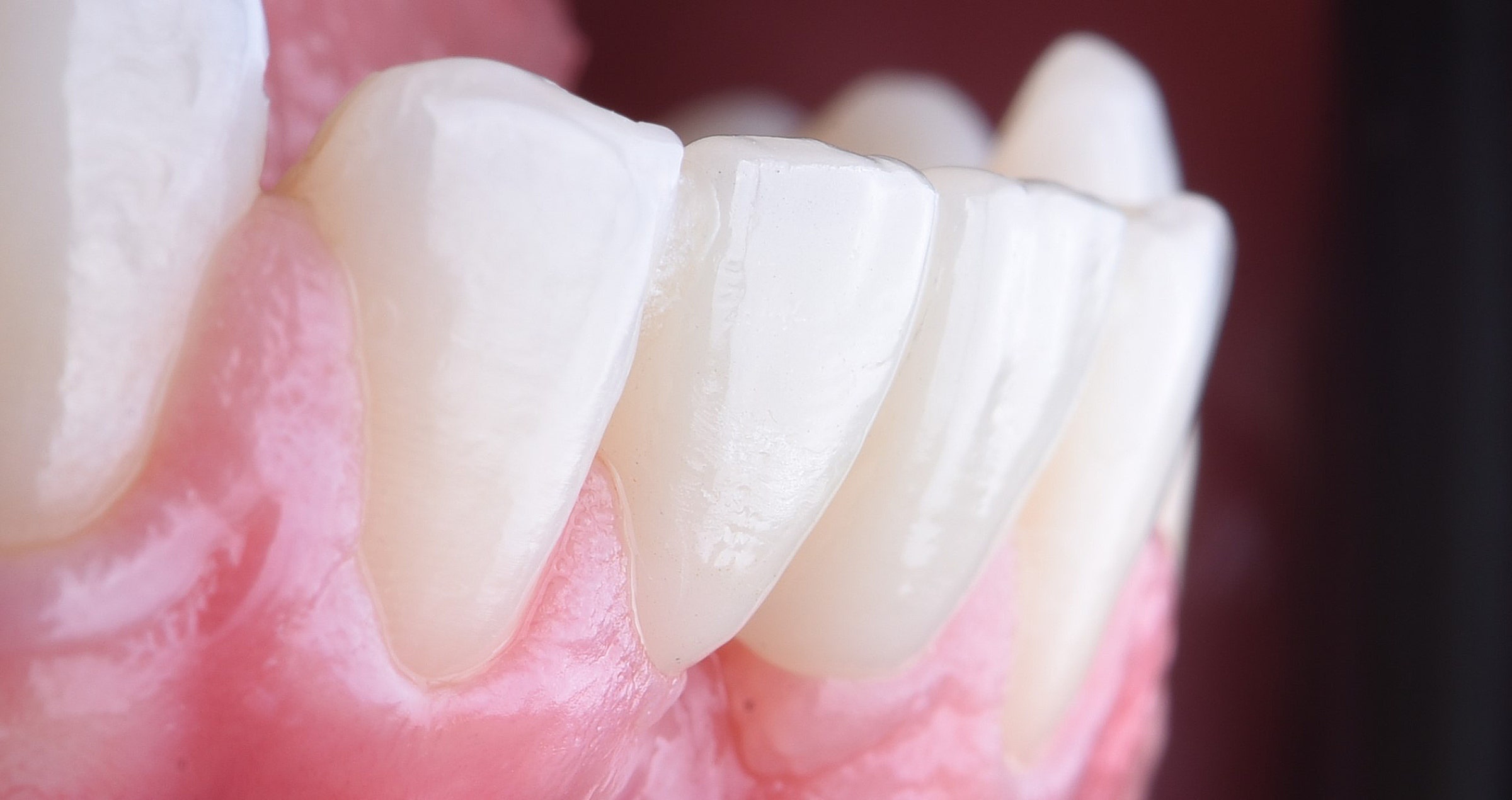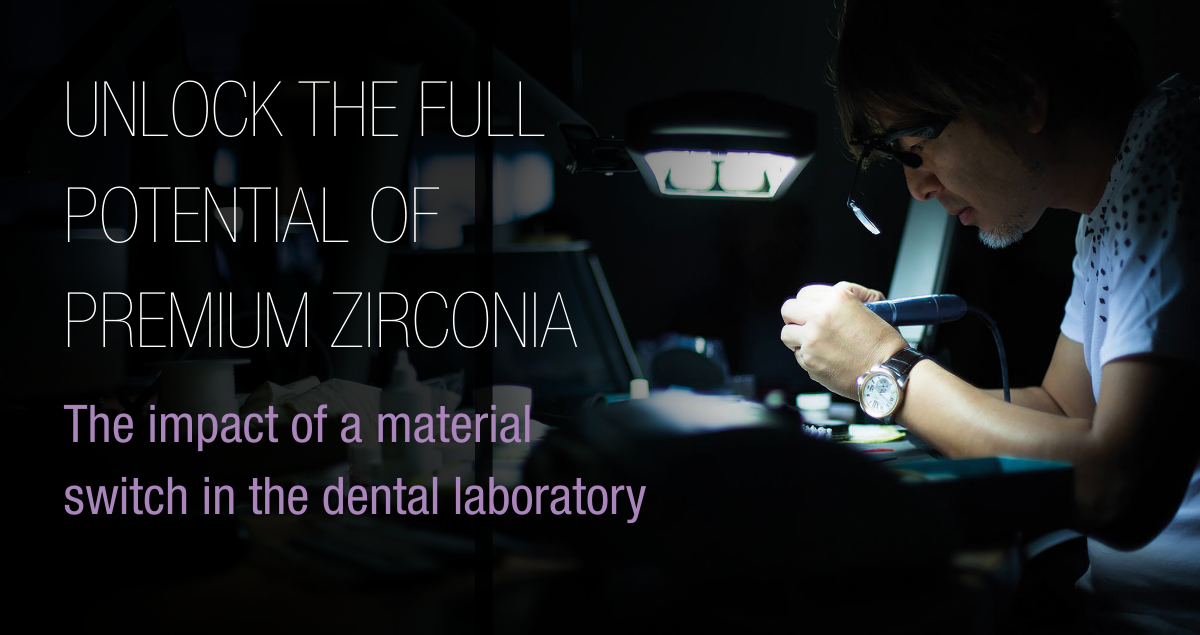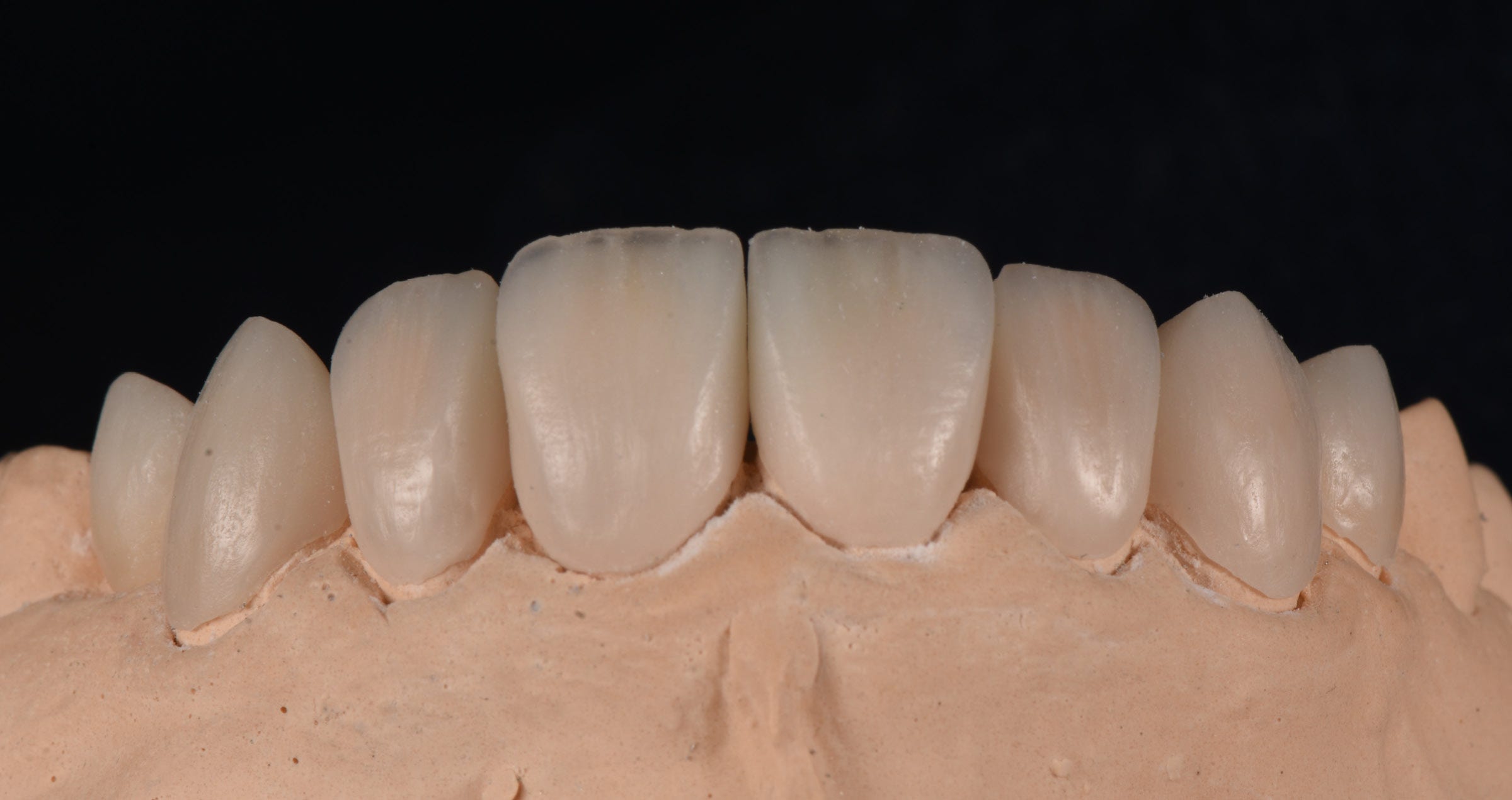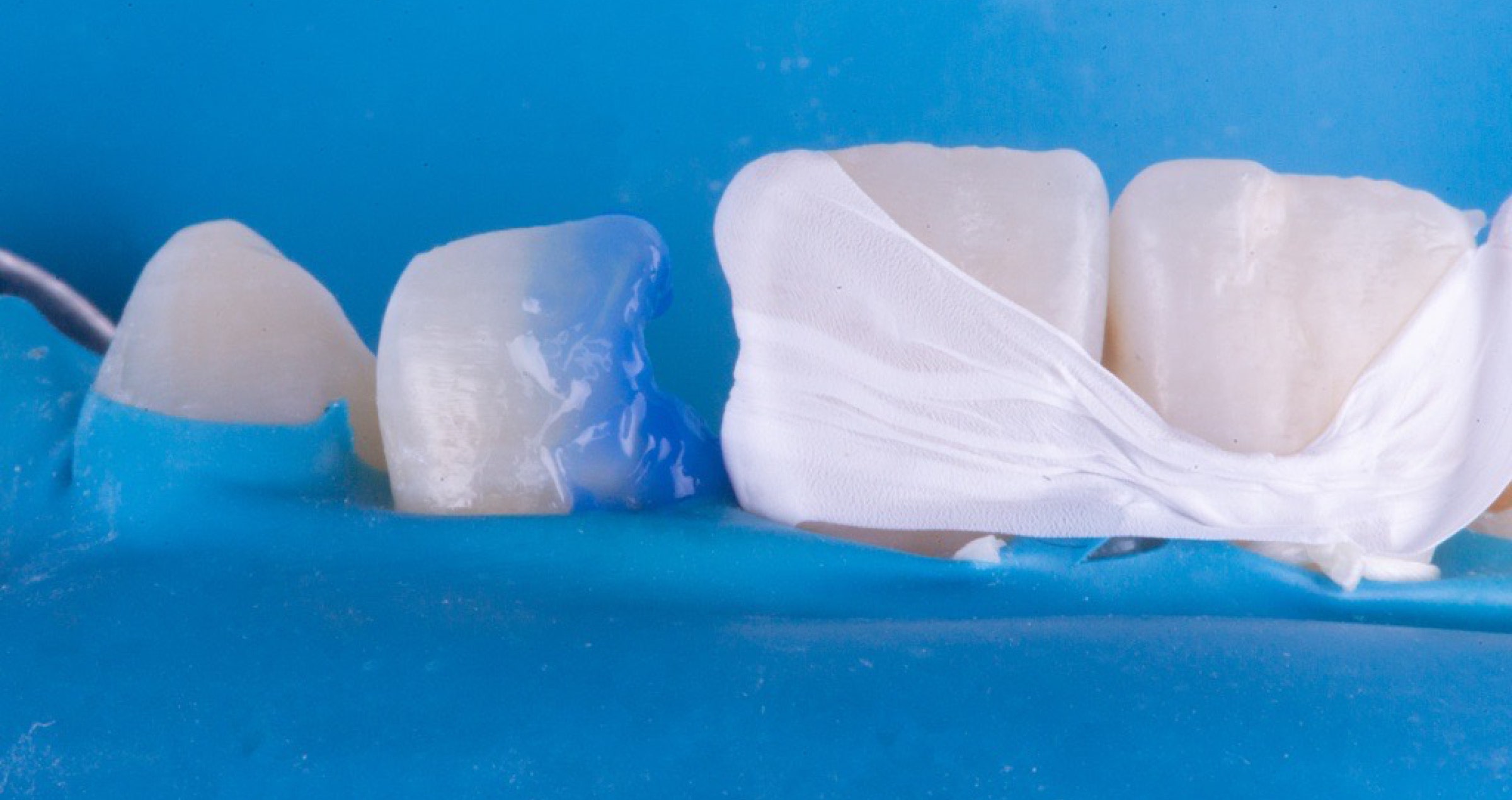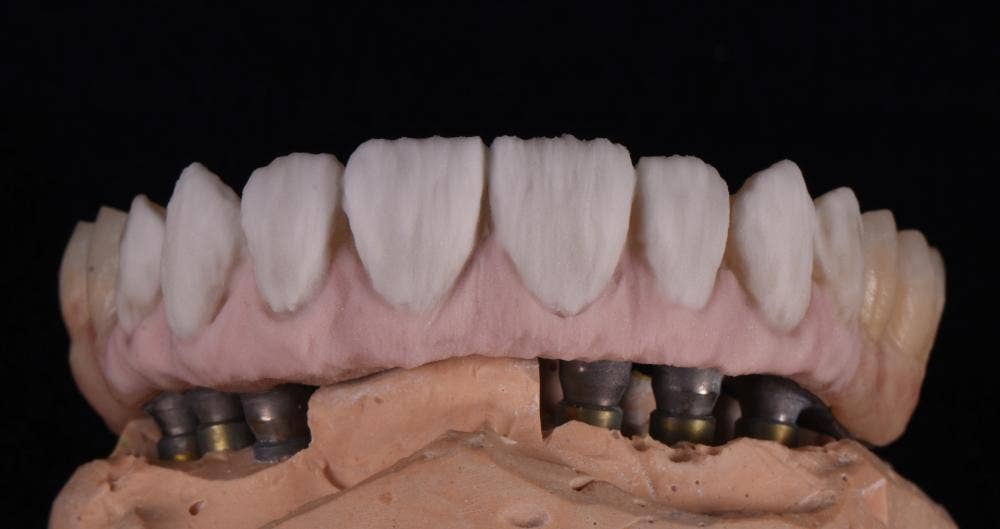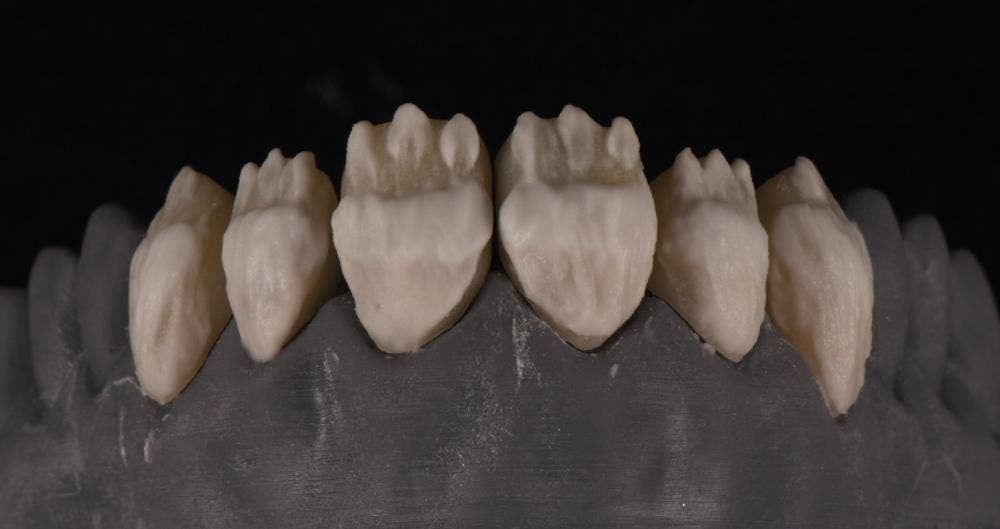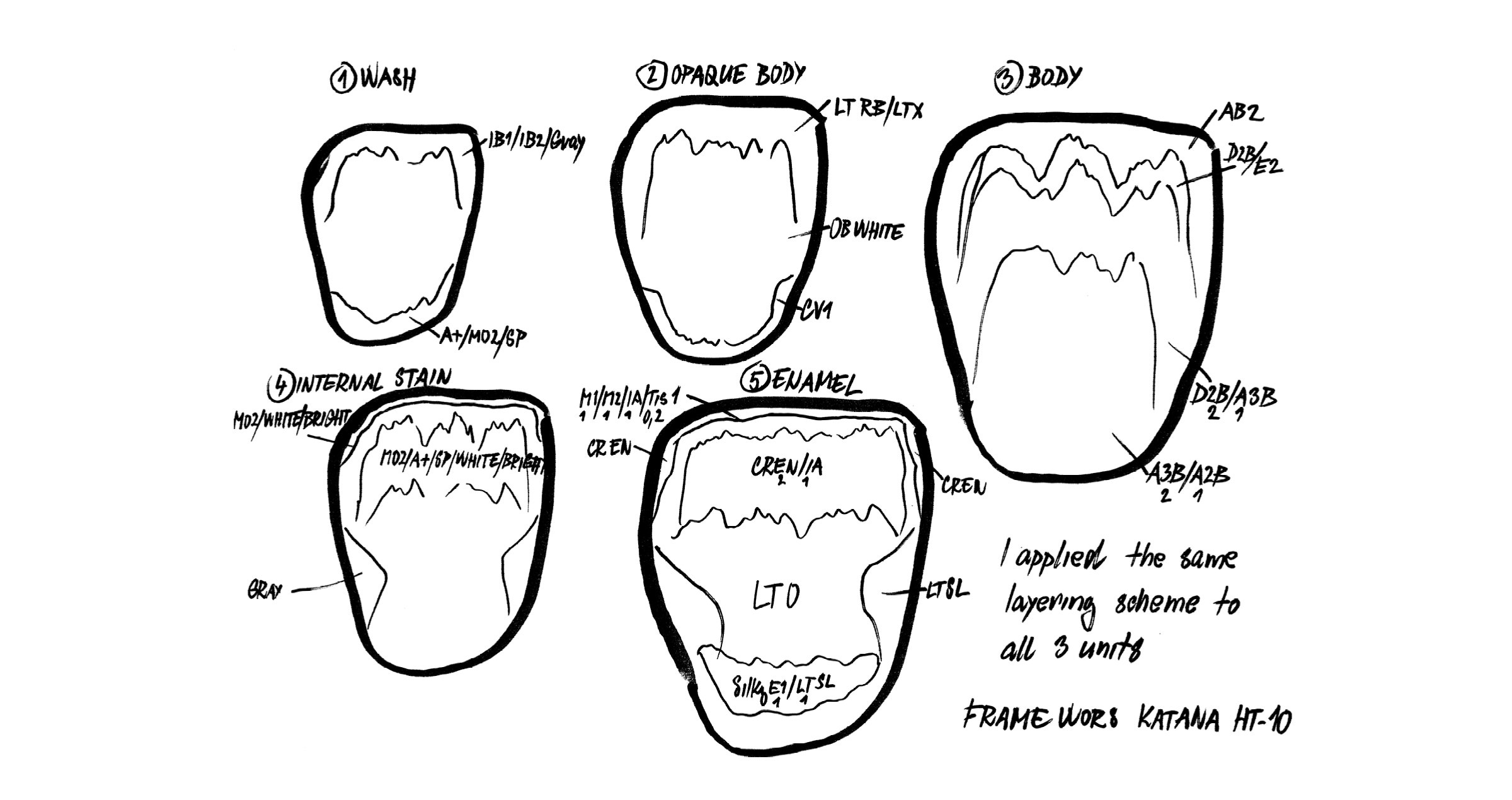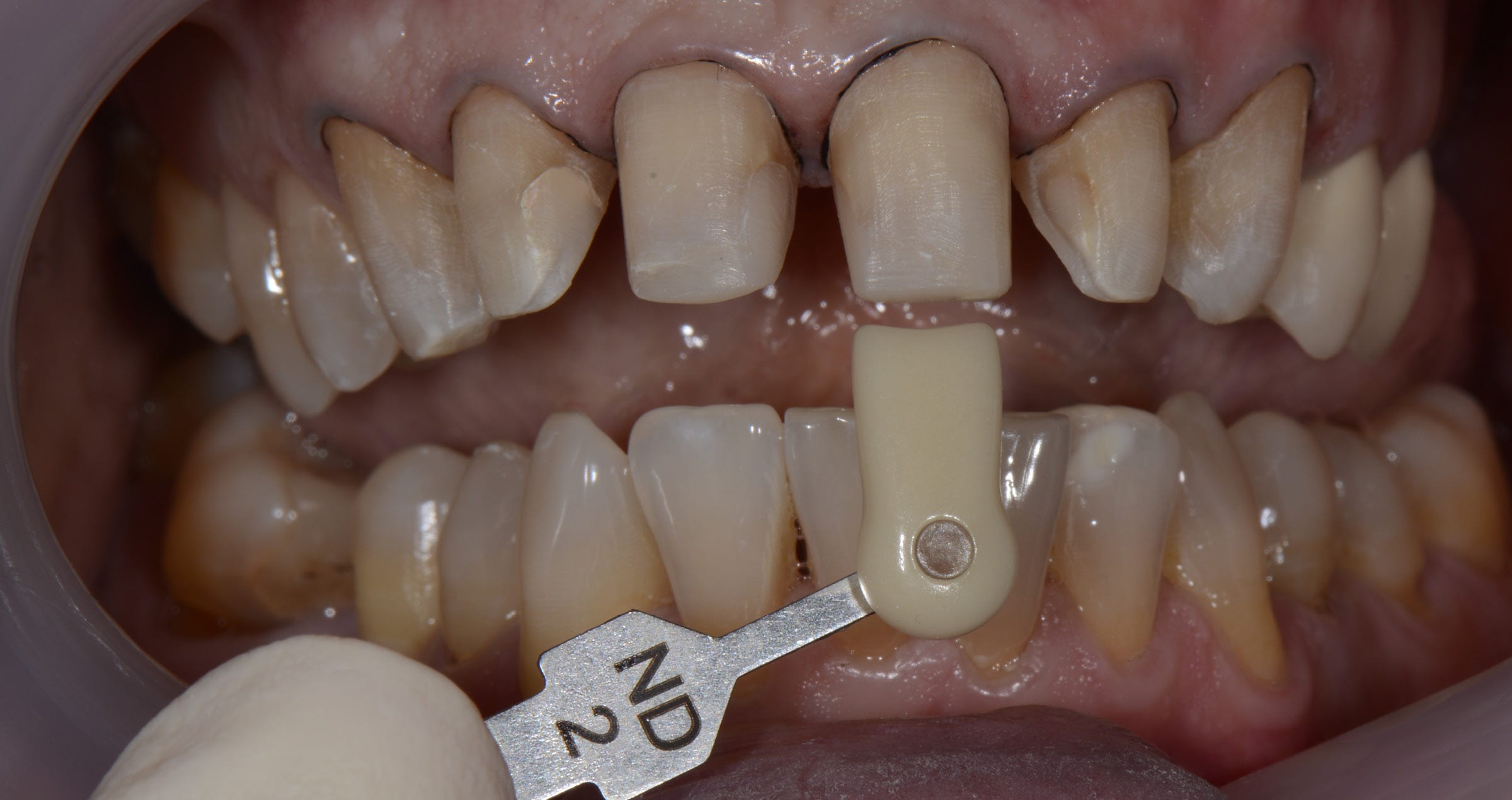Case by Kostia Vyshamirski, DT
KATANA™ Zirconia YML AND CERABIEN™ MiLai
Virtually every patient in need of restorative treatment desires functional restorations with an aesthetic appearance. However, the individual expectations and needs may be very different depending on the clinical situation (state of the natural tooth structure, parafunctional behaviour, periodontal health etc.), the patient’s financial resources and personal preferences. A versatile material combination fulfilling many different needs and desires is KATANA™ Zirconia YML finished using micro-layering with the new CERABIEN™ MiLai (both Kuraray Noritake Dental Inc.).
This system supports low invasive preparations due to a favourable minimum wall thickness of the merely monolithic multi-layered zirconium oxide prosthesis and a minimal thickness of the porcelain layer in the aesthetic zone. Moreover, the high strength zirconium oxide prosthesis combined with only a very thin layer of porcelains makes this technique extremely useful in patients with parafunctional habits like bruxism. Last but not least, consisting of a carefully compiled selection of internal stains and porcelain shades, CERABIEN™ MiLai supports the creation of individual 3D shade effects that mimic those of natural teeth even when space is limited. The following case example reveals how this is possible.
INITIAL SITUATION
The patient presented with concerns related to both function and appearance. During the diagnostic phase, it was determined that increasing the vertical dimension of occlusion (VDO) and creating a wax-up in the new jaw position would be necessary to improve both the occlusion and the aesthetic appearance of the smile.
Fig. 1. Intraoral scan of the maxillary teeth revealing severe tooth wear.
Fig. 2. Intraoral scan of both jaws confirming the need for an increase of the VDO.
Fig. 3. Intraoral scan: Occlusal view of the maxillary teeth.
TREATMENT PLANNING AND COMPUTER-AIDED DESIGN
Following the approval of the wax-up, the treatment plan was created. It consisted of restoring the four anterior incisors with zirconia crowns and performing direct composite restorations on the posterior and lower teeth. To conserve as much of the healthy tooth structure as possible, the space created was aligned to the required wall thickness of the planned restoration (framework + micro-layer of porcelain in the vestibular areas only). Following an aesthetic analysis, the crowns were designed with a minimal vestibular cutback. This was due to the patient’s functional problems, which would increase the chipping risk in case of using a more heavy cutback design with a thicker, more conventional porcelain layer. KATANA™ Zirconia YML offers exceptional aesthetics, requiring only a 0.3 mm reduction for the porcelain to achieve natural results. Therefore, it was the logical material choice for this specific case.
Fig. 4. Minimally invasive preparations for the crowns.
Fig. 5. Occlusal view of the preparations.
Fig. 6. Aesthetic analysis – a crucial step for achieving the desired new smile.
Fig. 7. Frontal view of the crowns in their final cutback design.
Fig. 8. Lateral view of the crowns in the CAD software.
CROWN PRODUCTION
Immediately after milling, the zirconia surface was treated with effect liquids. This kind of pre-sintered characterization helps enhance the characteristics of zirconia restorations. In the presented case, orange stain was applied to the cervical area, while a blue stain was used at the incisal edge. In addition, a white opaque liquid was applied to the inner surface of the central zirconia crowns to block out any discolouration from the underlying tooth structure. Following final sintering, the vestibular layer of porcelain was built up with CERABIEN™ MiLai using a combination of internal stains and porcelain micro-layering. After morphological adjustments and surface polishing, the restorations were completed by applying CERABIEN™ ZR FC Paste Stain and Glaze. Final polishing was then performed to enhance the natural appearance of the surfaces.
Fig. 9. Effect liquids applied to the cervical and incisal areas of the crowns.
Fig. 10. Treatment of the central incisor crowns’ inner surfaces.
Fig. 11. KATANA™ Zirconia YML framework after sintering.
Fig. 12. CERABIEN™ MiLai Internal Stains and Porcelains.
Fig. 13. Prepared vestibular surfaces ready for application of the internal stains.
Fig. 14. Application of 0.2-0.3 mm layers of CERABIEN™ MiLai porcelain: CCV2 for the cervical area, LT1 – Creamy Enamel for the main body and luster, LTX at the incisal edge.
Fig. 15. Frontal view of the final restorations on the model.
Fig. 16. Lateral view of the final restorations on the model.
Fig. 17. Polished and glazed palatal surfaces of the crowns.
FINAL OUTCOME
The finalized restorations showcase great details, crafted with CERABIEN™ MiLai internal stains and porcelains. The result are natural-looking restorations. An additional benefit of using zirconia as a restorative material is its excellent compatibility, which is evident in the healthy gingival conditions.
Fig. 18. Restorations in place.
Fig. 19. Natural-looking restorations in the patient’s mouth.
Dental Technician:
KOSTIA VYSHAMIRSKI
DT Kostia Vyshamirski, Riga, Latvia
After earning his Dental Technician Certificate from the Medical College in Minsk, Belarus, in 2014, Kostia began his career as a dental technician, focusing on aesthetic clinical cases that integrate the latest digital and manual technologies. Moving to Riga, Latvia, in 2015 greatly expanded his professional opportunities.
With over a decade of experience, Kanstantsin Vyshamirski now conducts courses, lectures, and seminars worldwide. He is a member of the DTG (Dental Technician Guild), a professional group of dental technicians based in the USA, and an invited guest of the AAED (American Academy of Esthetic Dentistry), an exclusive, invitation-only organization.
Operating his own lab in Riga, Latvia, Kanstantsin specializes in aesthetic prosthetic porcelain work and is an experienced, passionate user of KATANA™ Zirconia and Noritake porcelains.


